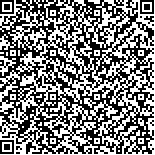本文已被:浏览 1261次 下载 1522次
Received:November 21, 2016 Revised:January 04, 2017
Received:November 21, 2016 Revised:January 04, 2017
中文摘要: 原位传感器是智慧城市建设的重要数据来源,其在城市资源协调、灾害预警、动态监测分析等领域发挥决定性作用.当前传感器观测接入方法未考虑传感器数据的流式特征,无统一的接入模型,导致无法统一过滤特定时空场景下的观测结果,传感器接入组件可复用性差.本文提出一种存算分离的原位传感器观测接入方法,以站点为中心的传感器统一接入模型为基础,将流式处理框架下的原位传感器观测接入过程分为数据获取、观测过滤与观测存储三个部分.实验证明该方法能够基于传感器统一接入模型有效接入网络结构异构的原位传感器站点,并实现对多个原位传感器观测结果特定时间、空间场景下的属性过滤.
Abstract:In-situ sensor is an important data source of intelligent urban construction, which plays a decisive role in urban resource coordination, disaster early warning, dynamic monitoring analysis and other fields. The present sensor observation access method does not consider the flow characteristics of sensor data with no uniform access model resulting in a failure of unified filtering of time and space under the observation and poor reusability of the sensor access components. In this paper, an in-situ sensor observation access method based on storage and computation separation is proposed. Upon the station-based observation access uniform model, the in-situ sensor access process is divided into three parts:data acquisition, observation filtering and observation storage. The experimental results show that the method can effectively access the heterogeneous in-situ sensor station based on the sensor observation access uniform model and realize the attribute filtering in the specific time and space scenes of the multiple in-situ sensor observation results.
文章编号: 中图分类号: 文献标志码:
基金项目:湖北省自然科学基金创新群体(2016CFA003);国家自然科学基金(41301441)
引用文本:
袁赛,陈能成,肖长江,杜文英,王凯.存算分离的原位传感器观测接入方法.计算机系统应用,2017,26(7):90-96
YUAN Sai,CHEN Neng-Cheng,XIAO Chang-Jiang,DU Wen-Ying,WANG Kai.Storage-Computation Separation Method for In-Situ Sensor Observation Access.COMPUTER SYSTEMS APPLICATIONS,2017,26(7):90-96
袁赛,陈能成,肖长江,杜文英,王凯.存算分离的原位传感器观测接入方法.计算机系统应用,2017,26(7):90-96
YUAN Sai,CHEN Neng-Cheng,XIAO Chang-Jiang,DU Wen-Ying,WANG Kai.Storage-Computation Separation Method for In-Situ Sensor Observation Access.COMPUTER SYSTEMS APPLICATIONS,2017,26(7):90-96


